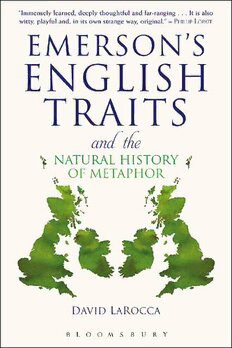
Emerson’s English Traits and the Natural History of Metaphor PDF
408 Pages·2013·17.514 MB·English
Most books are stored in the elastic cloud where traffic is expensive. For this reason, we have a limit on daily download.
Preview Emerson’s English Traits and the Natural History of Metaphor
Description:
Using English Traits as his point of departure, LaRocca explores the presence and significance of metaphors in Emerson. In doing so, he shows their centrality to Emerson’s thinking, but also reminds us of their centrality to all thinking. For example, purity metaphors abounded in nineteenth-century discourse in science, literature, and philosophy. Emerson picks up on this phenomenon, both to examine and undermine it. Why, for instance, would a faith in purity be philosophically dangerous? Purity is merely one of a host of metaphors that reveal problematical implications. Others include: blood, race, family, nation, genealogy, anatomy, and melancholy. By throwing light on Emerson’s scrutiny of the great metaphors of his age, LaRocca lays bare the allusive and anecdotal aspects of Emerson’s prose-the way it makes possible thinking on certain topics, and renews thinking of other issues. Metaphors are ubiquitous and yet-or, for that very reason-go largely unseen. We are all susceptible to blindness for metaphors. This book serves as a set of “reminders” of certain features of the natural history of our language.
See more
The list of books you might like
Most books are stored in the elastic cloud where traffic is expensive. For this reason, we have a limit on daily download.
